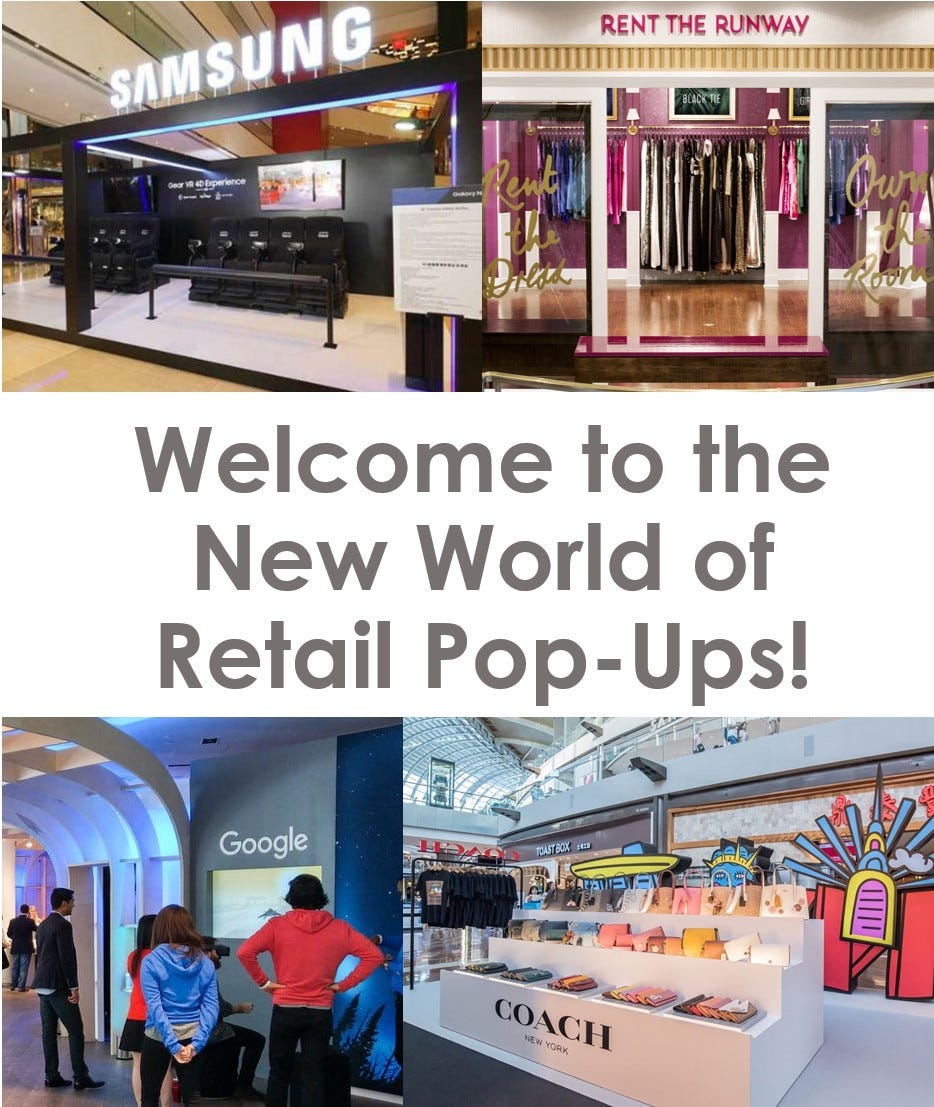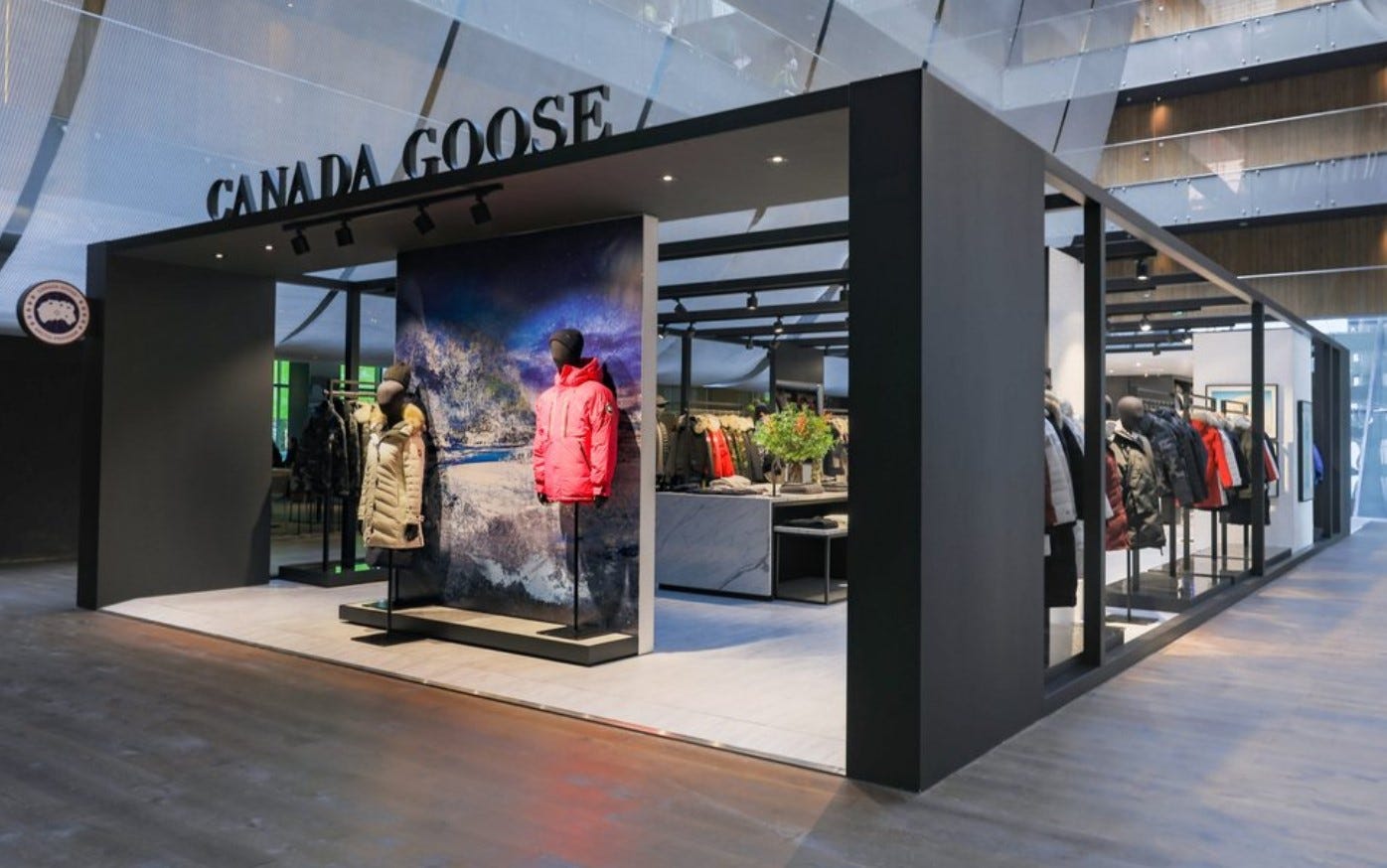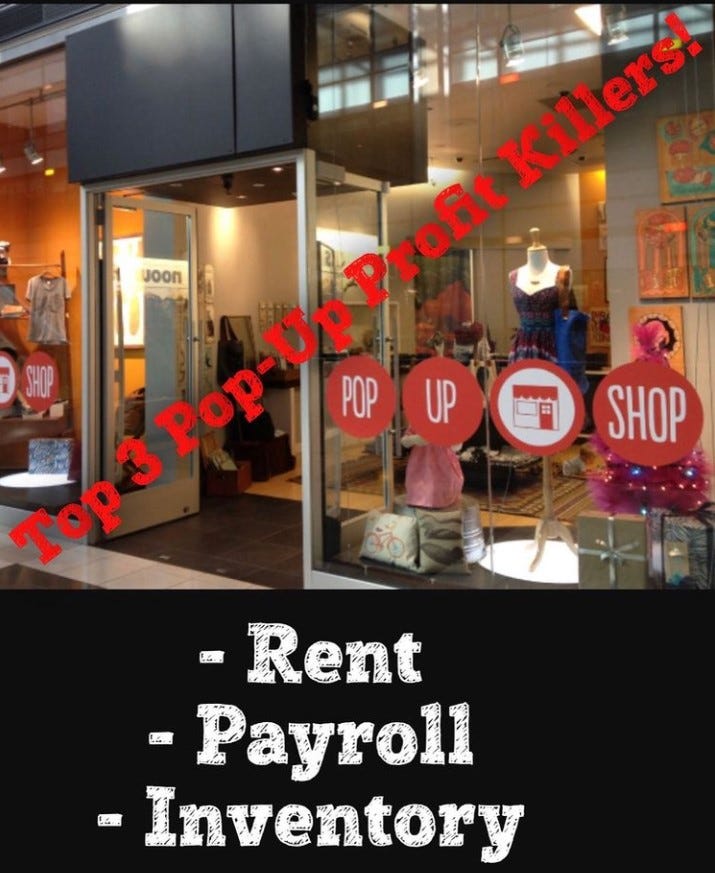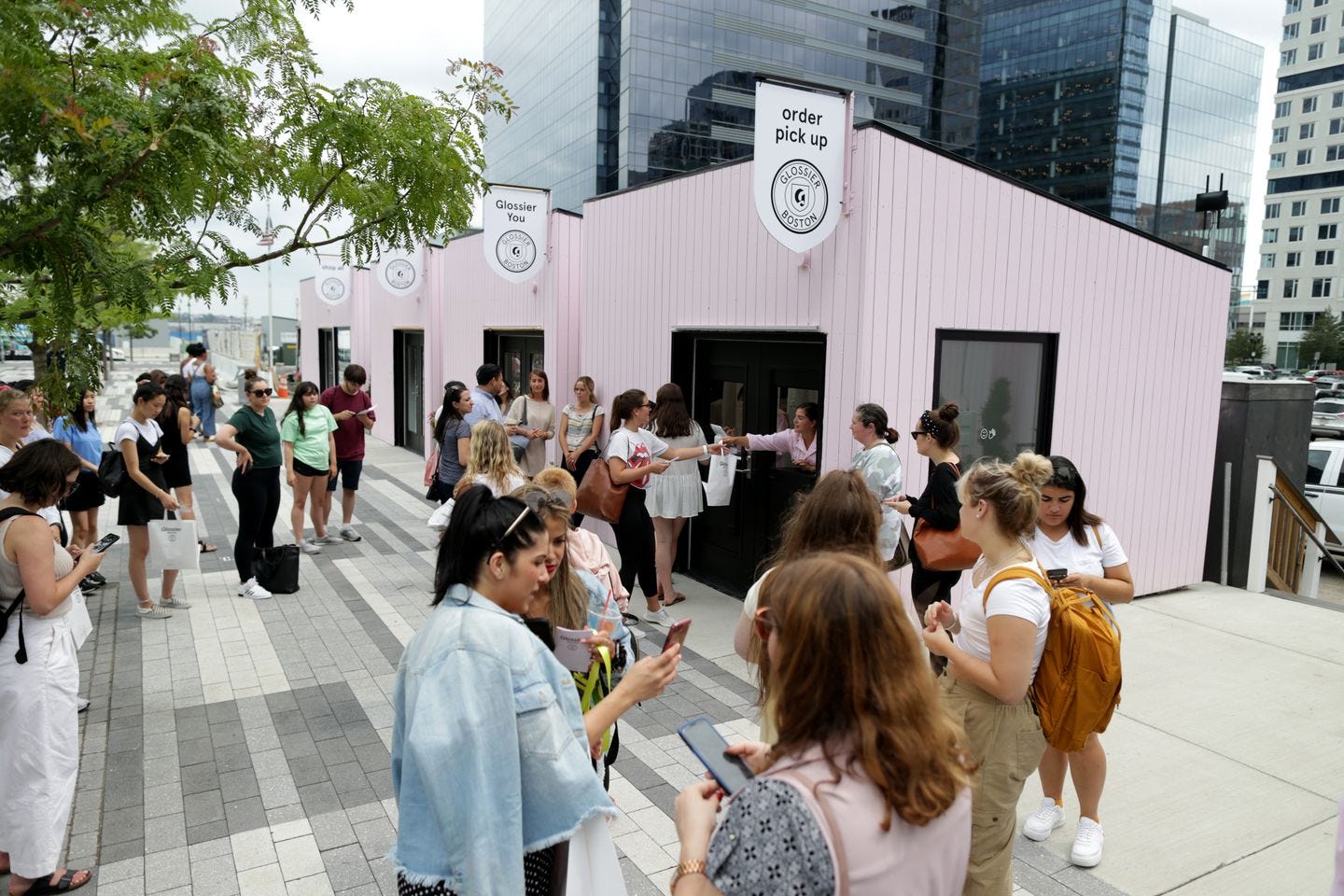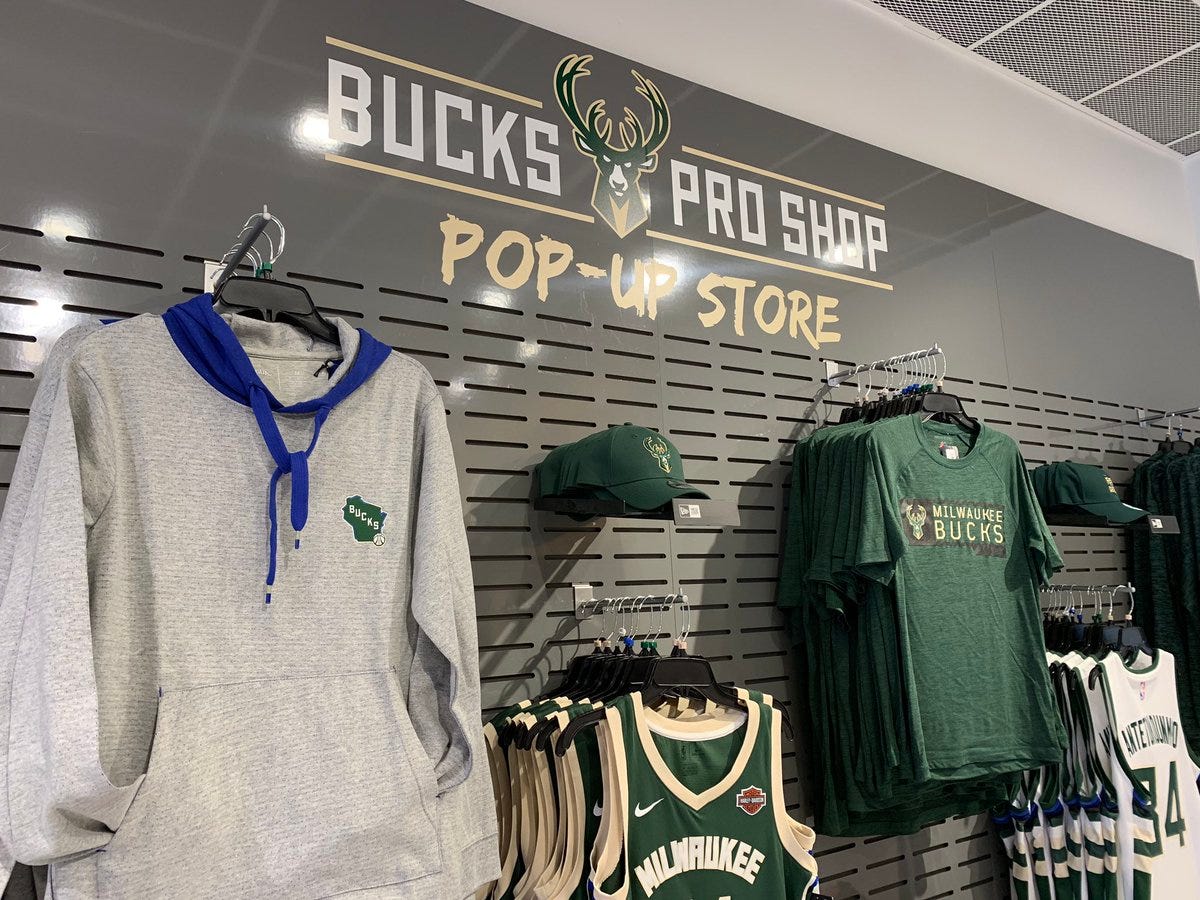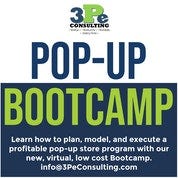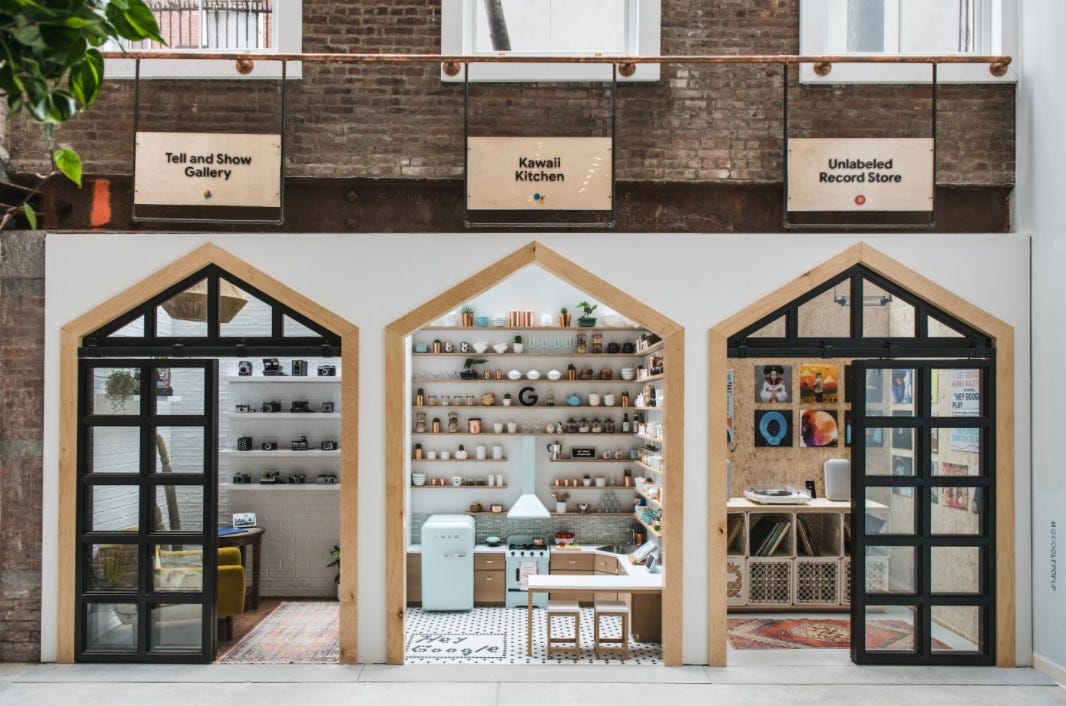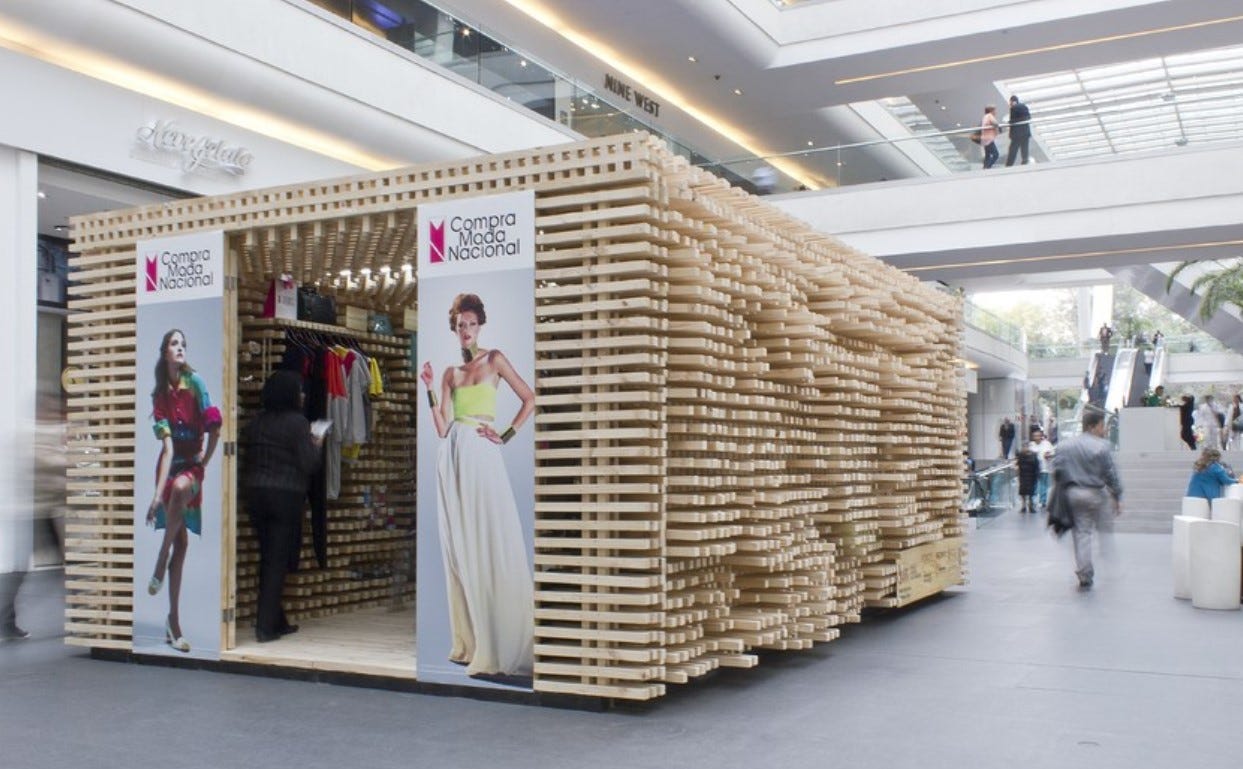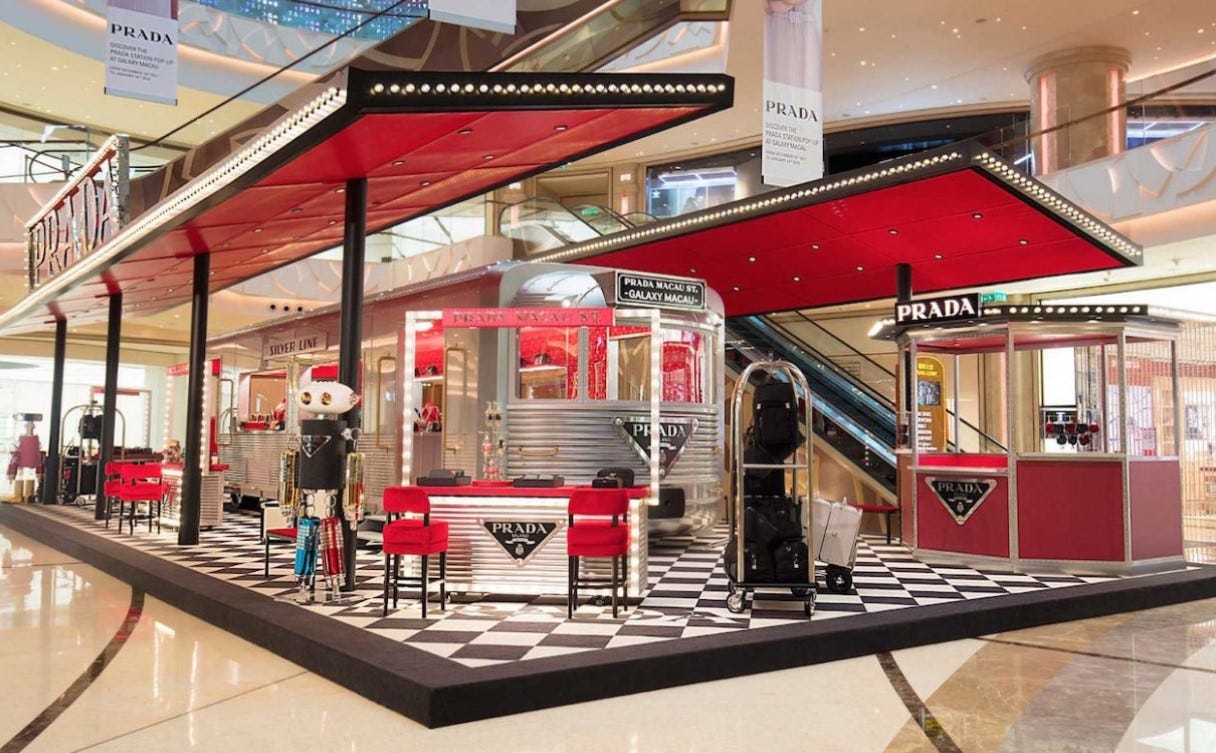3 Keys to Properly Planning Your Pop-Up Store
If you want to succeed, do NOT just lease a space, fill it with product and put up a sign.
Retail is back in a big way. Online, physical, it doesn’t matter. If you offer compelling products and an enjoyable consumer experience, you will benefit! This issue is a continuation of our discussion on one way to ride this wave, pop-up stores. I hope you love it.
If you do (or even like it a lot), please share All Things Retail with your co-workers and friends:
If you have not subscribed yet, you can here:
3 Keys to Properly Planning Your Pop-Up Store
If you are a regular reader of All Things Retail, you know I am a big believer in the power of pop-up stores. I have utilized temporary stores as a means of generating incremental revenue, profit, and brand awareness long before the term “pop-up” was created. I wrote about the power of pop-ups in Issue #4 and shared a case study on the Toys R Us initiative in Issue #11.
Why am I such a fan of pop-up retailing?
It’s low cost.
It’s low risk.
You “fish when the fish are biting” (meaning you operate when customer traffic is at its peak and go away when it’s quiet).
The opportunity to produce significant financial and brand benefits for your business is huge while the downside is minimal.
Consumers still love shopping physical stores and being able to touch and feel the products.
Digital advertising costs are sky high while pop-ups allow merchants to break through the online ad clutter.
But (there’s always a “but”), your program must be planned and executed properly. There are plenty of merchants that have operated temporary stores who walk away disappointed in their results. They may have lost money or perhaps they broke even. Not great considering the expectations and effort invested in the program. Why does this happen? Typically, it’s because those operators do not understand the model and they simply lease some space, fill it with product and put up a store sign. I’m sorry, but it’s not that easy, regardless of what many online articles may say.
Pop- Up Store Risks
Pop-Up sites are based on availability; there is no guarantee that good sites will be available when and where you want to operate. Identification of sites in high quality locations is essential; stores can fail based on poor site selection alone.
Site costs are a product of supply & demand. Careful research and diligence is required to ensure you do not overpay for a site or sites.
The operating model can be very profitable but is also sensitive to negative variances; a store or program can go from a profit to a loss quickly without proper executional disciplines.
Pop-up Stores will typically be staffed with temporary associates, creating a greater risk of poor performance relative to permanent retail stores with experienced employees.
Without prior year(s) sales history, projecting sales and related payroll needs becomes a greater challenge. This may also result in too much or too little inventory based on demand which will either create a heavy carryover of product or lost sales.
You get the point. Done properly, pop-up stores can be highly profitable. Done poorly, the chances of failure grow exponentially.
So, let’s dive into some of the key elements you must plan to help ensure a successful temporary store initiative. There is a bunch of detail beyond what we discuss below, but this will provide you with a great starting point for proper planning (hit me up if you want to discuss a deeper dive into developing plans and execution tactics). Here we go!
Sales
Sales revenue is the most challenging element of a budget to plan. There are many variables that can impact your sales results. Some of them are uncontrollable (economic conditions, weather, shopping center traffic, etc.) while many others are mostly if not fully controllable (site location, product offering, pricing, inventory availability, marketing promotions, customer service, operating term, and more).
Planning sales revenue should always be done conservatively. Historical results from other pop-up retail stores can be a guide, but metrics from your own business must be factored in. You should develop an anticipated sales range for your window of operation, and then plan both expense dollars and inventory investment based on the lower end of the sales range. It is typically easier to ramp up spending and inventory if sales perform above expectations than it is to scale down should your performance be below plan.
In my experience, $225,000 - $300,000 is a reasonable sales benchmark to use to begin your planning. These numbers are based on several actual pop-up programs that my clients have operated for between 8-12 weeks during Q4. But, as noted above, there are a ton of variables which can skew these results in either direction. I have experienced pop-ups that have done close to $1 million in sales as well as those that struggle to get into 6-figures. Understanding your business and how it may translate into a temporary retail environment is critical.
Margin
Maintained or gross margin is simply your initial margin (some refer to it as IMU; it is your list retail price less your cost of goods) reduced by promotional markdowns, clearance markdowns and inventory shrink (theft). The good news is that gross margin is for the most part controllable.
To state the obvious, retail prices must be set to allow for sufficient initial margin (north of 50% is great; below 35% warrants a deeper dive into your business plan) and be competitive enough in the marketplace to attract sufficient consumer interest to meet or exceed your sales plan. That said, retail prices can often be set on the higher end of average (within reason). Consumers shop pop-up stores on impulse and typically buy because they like an item, not because you are the low-price leader. Leverage this additional margin opportunity!
Promotional markdowns are typically necessary to entice customers into your store(s) and hopefully convert them into buyers. They need to be utilized tactically to help generate store traffic without becoming a significant drag on gross margin. With proper planning this is highly controllable. Historically ads, social media and storefront messaging are the most effective means of promo messaging. Once shoppers are inside your store, the need for promotions dissipates.
Clearance markdowns are a result of having too much of an item or items (bad item, good item but you bought or shipped too many, price too high, etc.). You do not want to carryover problem items and it’s much less expensive to sell them off in-season rather than at the end of season, so careful and ongoing inventory analysis and appropriate clearance markdowns are a must.
It’s vital to understand that your margin model should not assume you will liquidate all remaining inventory prior to store closing! It is difficult to return an acceptable profit with a 100% liquidation expectation. Options to a complete sell off include moving products to a permanent store; selling online, or simply packing them up until next year (be careful not to pack up trend or limited demand fashion or licensed items).
Planning targets (these are merely starting points based on historical results): Promotional markdowns 1.5% of sales, clearance markdowns 1.5% of sales, and shrink 2% of sales.
Operating Costs
Operating costs encompass a wide range of expenses, from rent and payroll all the way down to cleaning supplies and product bags. All expense lines should be budgeted based on a percentage of planned sales.
The two operating costs that are most critical to the success of your pop-up store(s) are rent and payroll. Securing the proper rent will be a result of your negotiations with your landlord (again, I touched on this in Issue #4). Your rent spend will be essentially locked in once your lease or license agreement is signed. Payroll, on the other hand, will require a daily review based on sales trends. Ongoing adjustments, to provide additional stores coverage if sales are above plan, or to reduce the spend if sales are below plan, is vital.
Unfortunately, we are out of space. We will do a deeper dive into planning and managing operation expenses for a pop-up program in a future issue. In the meantime, feel free to reach out to me with any questions on the pop-up model or how it can benefit your business.
Retail News & Happenings
TikTok pilots 'TikTok Resumes' video application platform
Cheaper leases have restaurants and retailers taking new spaces in Manhattan
How the best companies in the world are reinventing their customer experience
Brookfield Properties to enhance mall shopping with augmented reality
Circular Supply Chains are more sustainable. Why are they so rare?
4 Brilliant ways to use Instagram captions for more conversion
Lessons on resilience for small and midsize businesses
Sponsored Content
Interested in Learning How to Use Pop-Up Shops to Grow Your Business?
Back in 2018-19, 3Pe Consulting developed a full-fledged Pop-Up Bootcamp which was a multi-day, in-person event that covered every element of planning and operation one or more pop-up stores.
Since then, we have received a bunch of inquiries asking if we could do a lower cost, less formal and less time intensive version of that Bootcamp. So we did! The goal is to cover the basics of the pop-up model, real estate selection, and best practices in an interactive, 60-90 minute Zoom (or similar) group meeting. The initial meeting will be followed up by 2 one-on-one 30 minute calls to review the specific needs, questions, status, and concerns of each attendee. The cost is a fraction of what the in-person Bootcamp charges.
This program launches in August with several date/time options to attend. Click here for more info:
Learn More About Our Pop-Up Bootcamp
Cool Pics:
Quotes of the Week:
“Like most retailers, we don’t know exactly where we will land at the end of it but our curiosity and willingness to create will be a guide for us.”
- Jesper Brodin, CEO, Ikea
“Do more pop-ups.”
- Andy Bailen, me
If you enjoyed this issue of All Things Retail, please share it with your friends, coworkers, peers, family members (you get the idea!):
If you haven’t subscribed yet, please do so here:
Finally, please reach out to me anytime with feedback, questions and ideas for future content.
Thanks again for reading All Things Retail!
© 2021 Andy Bailen Unsubscribe
10 Knoll Top Court, Denville NJ 07834
Closing message


